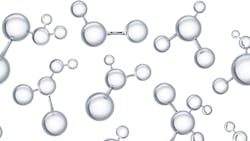Combining glass ionomer, IDS, and CEREC for intelligent hybrid restorations
We all know the feeling of a patient returning for a periodic exam only to find recurrent decay beneath a once-perfect restoration we proudly placed not long before. We often don’t know what we’ll find beneath another dentist’s crown, and we worry it might look and feel like nougat. We’re constantly managing the effects of CARS—caries associated with resin and sealants—hoping that our dentin bond will get better with the next restoration. However, composite resin’s exceptional bond strength is offset by its lack of a chemistry-based defense against future acid attack. Marginal leakage studies and personal experience show that cariogenic acids sneak under composite bonds and undermine what seemed like a perfect restoration. For this reason, I’ve spent most of my career skeptical of composite resin.
In its place, I’ve used and advocated for glass ionomer, a calcium-fluoro-strontium glass with acid-neutralizing properties that make it much more effective in combating recurrent decay.
Read more about restorative dentistry:
- Restorative efficiency: How these leading dentists save time without sacrificing quality of care
- Conservative direct and indirect restorative dentistry to restore vertical dimension and anterior esthetics
Recently, I documented my treatment of an extremely high-caries-risk patient suffering from medication-induced xerostomia.1 The patient’s treatment involved full-mouth restoration with large glass ionomer core buildups, supporting partial and full-coverage CeraSmart and CeraSmart 270 restorations. The technique I used with this patient was one I’ve developed over years of trial and error trying to bond my CEREC restorations to my favorite material, glass ionomer.
Composite resin and glass ionomer can coexist
During that trial and error, I found that composite resin chemistry and glass ionomer can coexist in a caries-preventive way. The combination of immediate dentin sealing (IDS), glass ionomer, and CeraSmart (force-absorbing hybrid ceramic) provides a comprehensive, predictable, caries-resistant, one-visit restoration that can be adapted to a variety of clinical scenarios.
I can understand why many dentists are still skeptical of glass ionomer based on the failure of early versions of ASPA in the 1970s. When I was in dental school, we shied away from the use of a material that wasn’t as esthetic as composite, despite the fact it offered a true chemical bond to dentin and enamel and exhibited the same coefficient of thermal expansion as dentin. Glass ionomer was a material that couldn’t compete with the myriad of layering and shade-matching techniques that composite offered the dental artists in my class. Even I would scratch my head and wonder why anyone would use an opaque material that dissolved away.
Improvements to glass ionomer chemistry
Thankfully, there have been significant improvements made to glass ionomer chemistry over the past three decades. Many dentists, however, don’t keep it in their armamentarium because they’re still unaware of these developments. In the last 10 years, the improvements in glass ionomer have made it one of the easiest and most effective methods of fighting caries in and around our restorations.
Glass ionomer, when applied to the tooth, fuses into a bioactive glass with a remarkable ability to sacrifice itself at the perfect moment. For a cavity to fully form, the tooth must reach a pH of 5.5 (the critical pH of hydroxyapatite), but glass ionomer chemically dissolves at a pH just above 5.5, releasing ions that neutralize the acid attack before it can irreparably damage the tooth. The presence of glass ionomer assures me that my restoration can withstand a lack of brushing and flossing without catastrophic failure. Sometimes I do see failures, but rarely am I chasing recurrent decay as deeply as I once did. Glass ionomer makes the damage fixable, as the restoration is often easily repaired with bonding or glass ionomer.
Of course, glass ionomer isn’t perfect. Early on, the main problem I’d encounter with this material was its inability to bind effectively to my preferred CEREC block, the hybrid ceramic resin that is CeraSmart. While I could achieve some temporary bonds and I was happy to see less recurrent decay, I needed to find a better way to retain my onlays and crowns.
A combination technique
Thankfully, developments in glass ionomer’s chemistry have coincided with significant improvements in bonding techniques. A short while ago, I was introduced to the IDS technique, the efficacy of which made me rethink my skepticism of composites. IDS was the missing link for a restoration design that needed structural durability along with a chemistry-based defense. With it, I realized that I could get the best of all three materials—combining the anticaries properties of the glass ionomer, the superior bonding capabilities of IDS, and the strength of a ceramic resin hybrid.
The result is what I consider an amalgamation of the co-cure technique, the sandwich technique, and modern composite bonding. The benefits of combining these techniques are multifold. CEREC technology allows the creation of an indirect restoration right in the office in about 10 minutes; CeraSmart doesn’t need to be fired and polishes chairside in minutes. My patients can watch the CEREC machine fabricate their computer-designed tooth, and I’m confident that the glass ionomer is protecting the tooth under my restoration and will slow future cariogenic attacks.
I’ve always been a “cariologist” at heart. I used to say, “If I can’t fix a tooth with glass ionomer, I’ll fix it with resin-modified glass ionomer. And if I can’t fix it with resin-modified glass ionomer, I’ll lay hands on you and pray.” I haven’t said that in quite a while with my newfound appreciation for what my composite-loving colleagues have been touting for some time. I never thought I’d use CEREC, and I never thought I’d write about my use of composite bonding. But combining those technologies with glass ionomer has produced undeniably successful results in some extreme-caries-risk patients. I’ve found peace of mind is in my patient’s caries-resistant and CEREC-restored piece of mouth.
Editor's note: This article originally appeared in the February 2022 edition of Dental Economics.
Reference
- Novy BB, Kennedy EN, Donahoe J, Fournier S. Minimizing aerosols with non-surgical approaches to caries management. J Mich Dent Assoc. 2020;102(7):48-56.
About the Author
Brian B. Nový, DDS
Brian B. Nový, DDS, is the chief dental officer of the Alliance Dental Center, Massachusetts Public Employees Fund. He served as president of the National CAMBRA Coalition and is currently the consumer representative to the United States Food & Drug Administration Dental Products Panel. His awards include the American Dental Association (ADA) Adult Preventive Care Practice of the Year, the Academy of General Dentistry Weclew Award, the Dugoni Award, and the ADA Evidence-Based Dentistry Practice Award.

